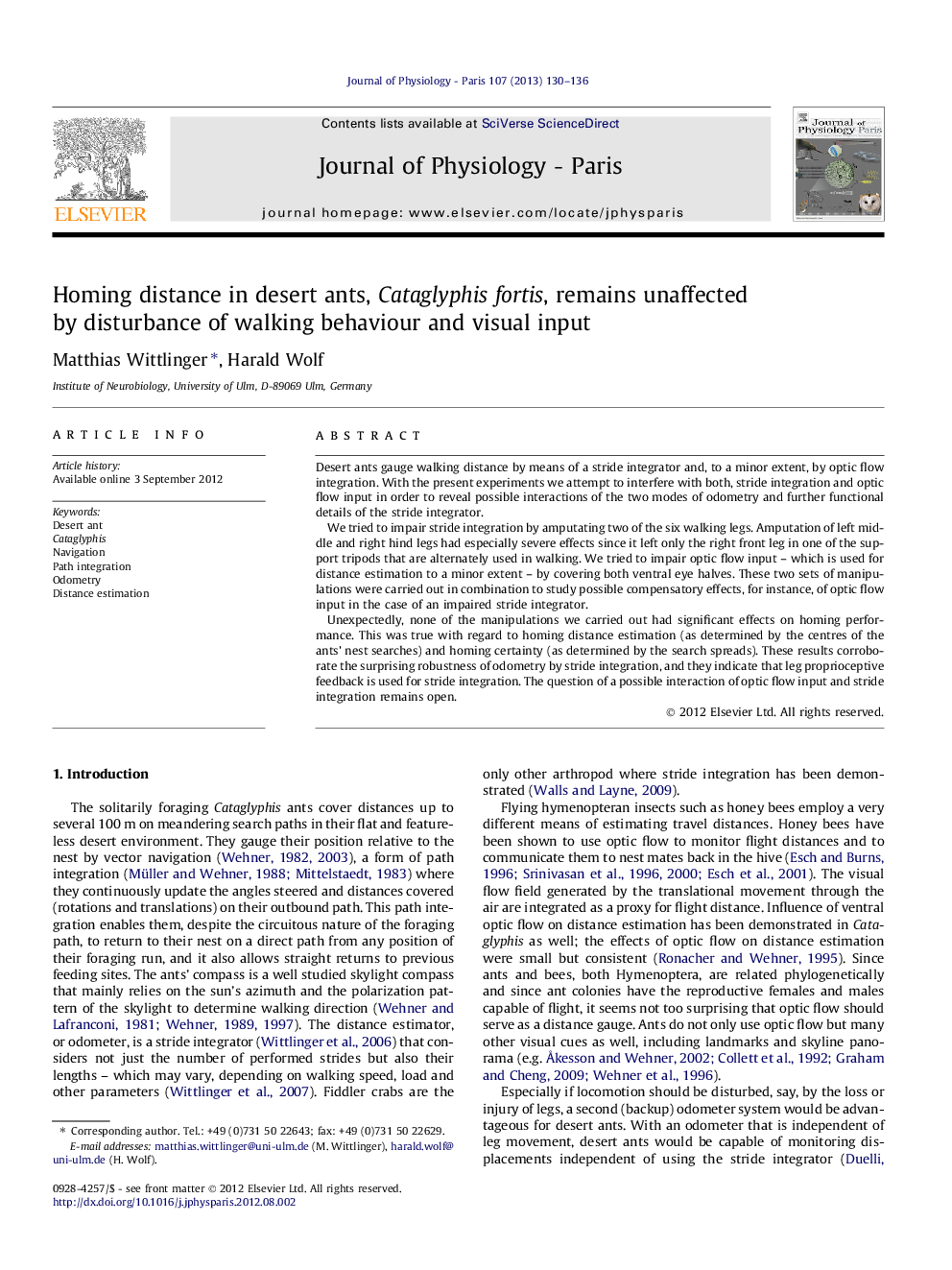| Article ID | Journal | Published Year | Pages | File Type |
|---|---|---|---|---|
| 2842200 | Journal of Physiology-Paris | 2013 | 7 Pages |
Desert ants gauge walking distance by means of a stride integrator and, to a minor extent, by optic flow integration. With the present experiments we attempt to interfere with both, stride integration and optic flow input in order to reveal possible interactions of the two modes of odometry and further functional details of the stride integrator.We tried to impair stride integration by amputating two of the six walking legs. Amputation of left middle and right hind legs had especially severe effects since it left only the right front leg in one of the support tripods that are alternately used in walking. We tried to impair optic flow input – which is used for distance estimation to a minor extent – by covering both ventral eye halves. These two sets of manipulations were carried out in combination to study possible compensatory effects, for instance, of optic flow input in the case of an impaired stride integrator.Unexpectedly, none of the manipulations we carried out had significant effects on homing performance. This was true with regard to homing distance estimation (as determined by the centres of the ants’ nest searches) and homing certainty (as determined by the search spreads). These results corroborate the surprising robustness of odometry by stride integration, and they indicate that leg proprioceptive feedback is used for stride integration. The question of a possible interaction of optic flow input and stride integration remains open.
► We tried to impair stride integration by amputating two of the six walking legs. ► Homing accuracy and homing certainty remain unaffected by walking disturbances. ► This was true even if ventral optic flow was eliminated, a 2nd odometry mechanism. ► Ventral optic flow input does not enhance search certainty in homing ants.
